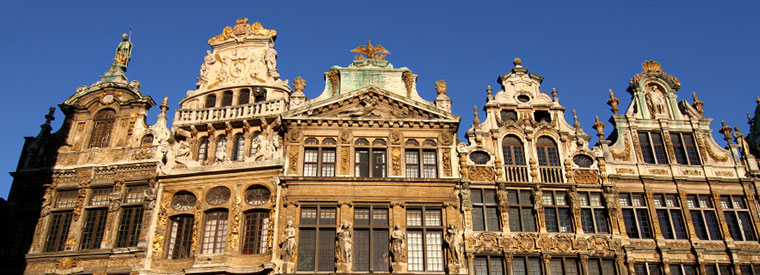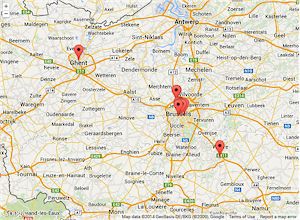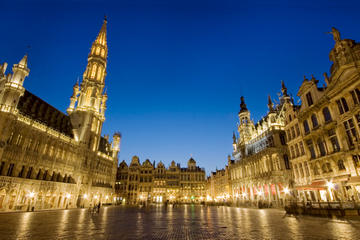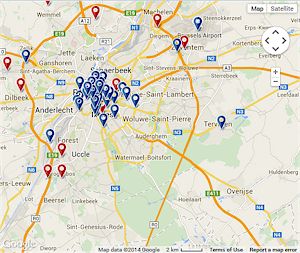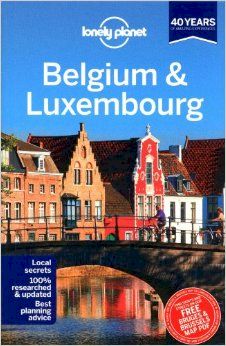« BELGIUM • DISCOVER BELGIUM • Brussels
Discover magical Brussels
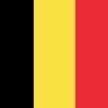
Brussels has grown from a 10th-century fortress town founded by a descendant of Charlemagne to a sizeable city. Since the end of the Second World War, Brussels has been a major centre for international politics. Hosting principal EU institutions, the secretariat of the Benelux and the headquarters of the North Atlantic Treaty Organization (NATO), the city has become the polyglot home of numerous international organisations, politicians, diplomats and civil servants.
• Destination Brussels & Surrounds
A | B | C | D | E | F | G | H | I | J | K | L | M | N | O | P | Q | R | S | T | U | V | W | X | Y | Z
» Atomium
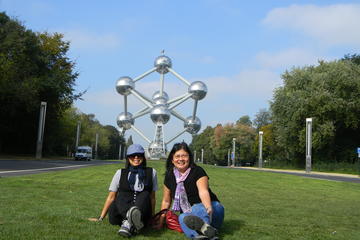
This alien-looking and vast silvery sculpture near the Bruparck was created in 1958 for the Expo 58 and represents a iron molecule magnified 165 billion times. A mesh of nine corridors leading to nine giant spheres, it was destined to be demolished after the exhibition but proved such a hit with the Bruxellois that it was reprieved and has become a national icon. Reaching up to 335 feet (102 m) the Atomium underwent a much-needed and rigorous facelift in the early 2000s …
» Brussels City Hall (Hotel de Ville)
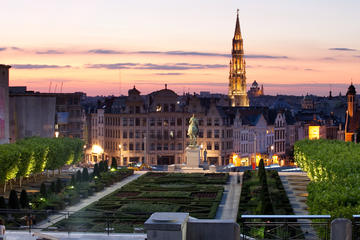
Dominating the Gothic and Baroque mansions of Brussels’s glorious cobbled Grand-Place from the south side, the spectacular City Hall has a flamboyant Gothic façade and more restrained classical additions lying around a courtyard behind it. Begun in 1402, this beloved local landmark was largely designed by Flemish architect Jacob van Thienen, but its distinctive lacy central belfry is the work of his compatriot Jan van Ruysbroeck and doubles the height of the façade …
» Brussels Royal Palace (Palais Royal de Bruxelles)
_d458-150.jpg)
Although the Royal family no longer call the Royal Palace (or Palais Royal Bruxelles) home, it is where the King and Queen still have their offices and the King carries out his duties as the head of state. The building also houses state rooms where large receptions are held and also living quarters for visiting dignitaries. The Palace was built in 1775 on the site of the former Coudenberg Palace which was built in the 11th and 12th centuries, but burnt to the ground in 1731 …
» Cinquantenaire Park (Parc du Cinquantenaire)
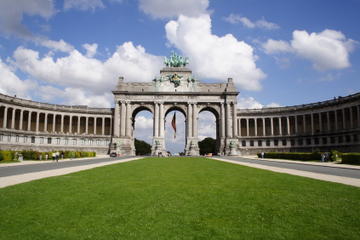
A large public park, the Cinquantenaire Park (or "Parc du Cinquantenaire" as it is known in French) is dominated by buildings built for the 1880 National Exhibition which also celebrated fifty years of Belgian independence. The centerpiece of the park is a triumphal arch finished in 1905. To the north of the arch is the Royal Military Museum. To the south are the Royal Museums for Art and History, and AutoWorld, a vintage car museum with over 350 classic cars, one of the largest collections in Europe …
» Coudenberg - Former Palace of Brussels
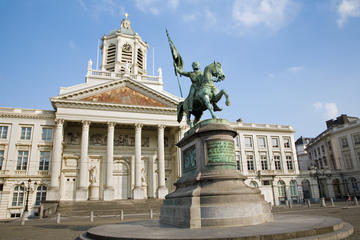
Found at the southern end of the Parc de Bruxelles, Coudenberg marks the site of the original palace of the Belgian Royal Family, which was destroyed to make way for the present Palais Royal. In the 12th century a small, fortified castle stood on Coudenberg Hill, and this was gradually extended and reworked by successive monarchs until it reputedly became one of the most beautiful palaces in Europe and the main residence of King Charles V …
» European Union Parliament
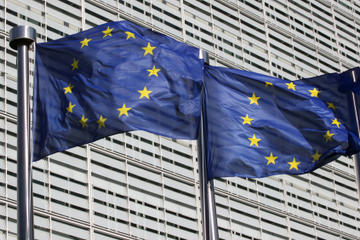
Brussels is the administrative heart of the European Union and the Espace Léopold buildings are where parliament meets throughout the year to debate and discuss the future of Europe. The main building of the European Union Parliament complex is the Paul-Henri Spaak building, an impressive glass structure with a distinctive arched roof, it’s been nicknamed "Caprice des Dieux" (whim of the gods) after a similarly shaped French cheese …
» Ghent
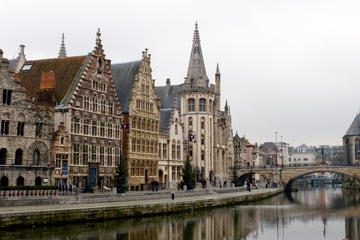
Ghent sits at the meeting point of two rivers: the Leie and the Scheidt. With roots right back to the Stone Age, Roman times, and abbeys founded in 650AD, by the 13th century Ghent was the largest European city after Paris. During the 14th century it was building its wealth through trading with England, turning English wool into cloth and selling it back. Inevitably war and taxes brought all this undone, culminating in the defeat of the city by one of its own sons, Charles V …
» Grand-Place
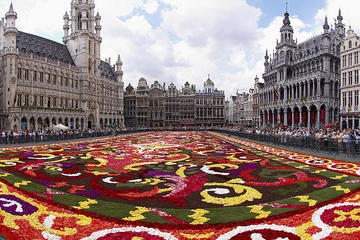
Europe’s most picturesque square, Grand-Place is surrounded by baroque and gothic guildhalls and the stunning 315 foot (96 meter) Brussels Town Hall. The stunning buildings in this UNESCO World Heritage site date mainly from the late 17th century. Grand Place is also known in Dutch as Grote Markt as it was the large central market in Brussels. The surrounding streets still bear the names of the stalls that lined the street: Rue des Bouchers (butchers) and Peperstraat (pepper merchants) …
» Hard Rock Cafe Brussels
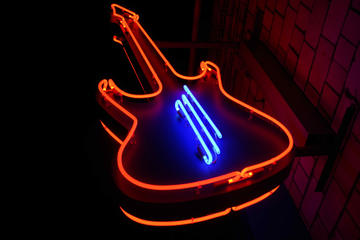
Blending the classic atmosphere of an American diner with the devil–may–care edge of rock ‘n’ roll, the Hard Rock Café is much more than just a café – it’s an international institution, and it was only a matter of time before the legendary restaurant made its way on to Belgian soil. Opening its doors in 2012, the Hard Rock Café Brussels has been enticing locals to swap their French fries and Belgian waffles for some all-American soul food ever since …
» Herge Museum
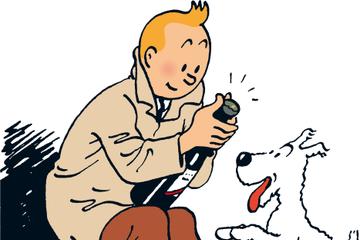
Belgium has produced more comic-strip creators than any other country, and one of the world’s favorite comic characters flowed from the pen of Georges Remi, who breathed life into Tintin and his trusty terrier Snowy in 1927 under the name Hergé. Tintin’s outlandish adventures are published in over 70 languages, and more than 200 million copies of all 24 titles have been sold around the world. Hergé is now commemorated at his own museum just outside Brussels …
» Manneken Pis
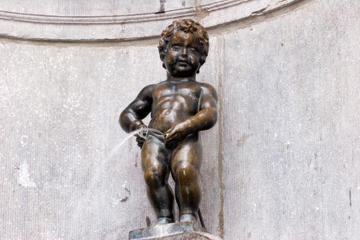
The Manneken Pis, a bronze fountain statue by Jerome Duquesnoy, dates from 1619 when it replaced a stone statue from the 1400s. The residents of Brussels have embraced this diminuitive statue of a small boy urinating into a fountain as a symbol of their irreverence. There are many stories behind the Manneken Pis with most either referring to a young boy urinating on a fire/explosive device thus saving the city from destruction by invading armies or the lost son of a nobleman who was later found urinating in a fountain …
» Mini-Europe
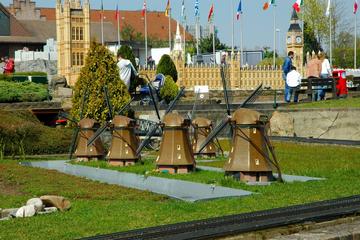
If you’ve only got a few days in Brussels, make a speedy tour of the major sights of the countries in the European Union at Mini-Europe – all in miniature. Among the 350 detailed models exhibited here, the architectural highlights featured include the Eiffel Tower, Big Ben, the canals of Venice and the Acropolis; they’re all there in carefully replicated models scaled down to 1.25. The park offers an entertaining way for kids to learn more about the countries of the EU …
» Palace of Justice (Palais de Justice)
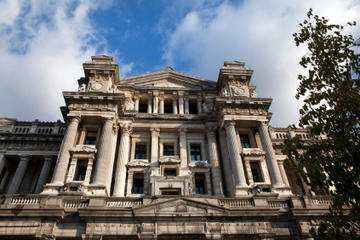
The Palace of Justice is believed to be the largest building constructed in the 19th century. It’s covers 260,000 square feet (24,000 square meters) and dominates the Sablon area. It was built on an area known as Gallows Hill overlooking the working-class parts of the city. Around 3,000 houses were demolished to make way for the building that is larger than St. Peter’s Basilica in Rome. This angered locals and the word "architect" became a derogatory term …
» Place du Grand Sablon
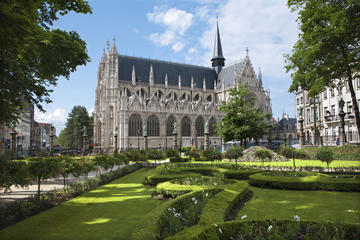
Sablon is a smart little quartier and one of the most charming in Brussels; it is an intricate maze of cobbled streets set around two delightful squares, and was once home to the aristocrats of Brussels. The whole area is packed with stylish restaurants, slick galleries and hip cafés; the bar terraces of the lovely Place du Grand Sablon in particular provide the perfect spot in which to enjoy a glass of Belgian beer after a day’s sightseeing …
» St Michael and St Gudula Cathedral
_d458-164.jpg)
It took 300 years to complete the St. Michael and St. Gudula Cathedral and its architecture spans styles from Romanesque to Gothic to Renaissance. The Renaissance stained-glass windows are amazing and fill the cathedral with light. Inside, the chapel is not overly adorned after plundering by various invading armies. The cathedral sits atop the ruins of an 11th century Romanesque chapel the remains of which can be viewed in the crypt …

« BELGIUM • DISCOVER BELGIUM • Brussels


